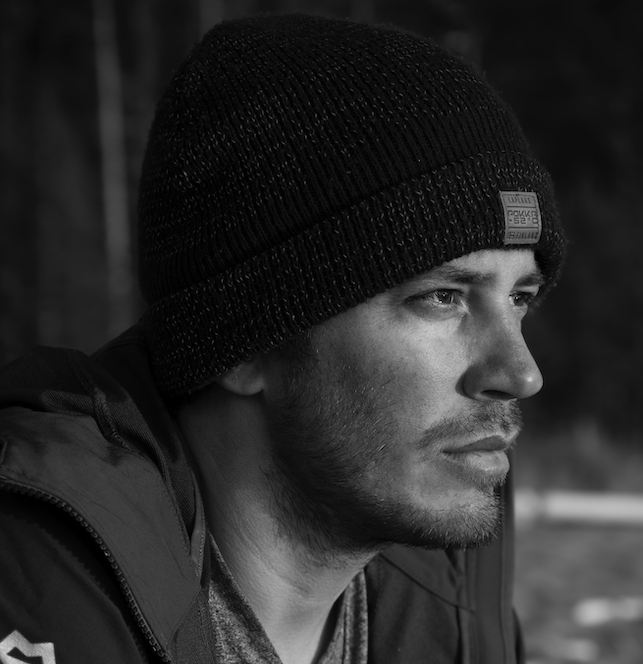Patrick Dykstra talks about his near-death experiences too casually. The nature videographer has swum alongside “all manner of sharks” sans cage and been lunged at repeatedly by a humpback whale in Norway. While navigating the Democratic Republic of the Congo at the peak of its civil war, he not only managed to dodge guerrillas — accompanied by an armed escort of 15 soldiers to photograph gorillas in the region — but also filmed two volcanic eruptions, one from “a close enough proximity that the soles of (my) shoes melted”.
He displays not a hint of fear for prodigious creatures or natural disasters that might so easily overwhelm even the best among us. Instead, what Dykstra truly fears is what humans can do — specifically, to the earth and its oceans.
“People tend to think of the ocean as a vast area that can absorb anything humans do to it, but that simply isn’t the case. Everything humans do has a major impact on the ocean,” says the 41-year-old award-winning cameraman.
“In just the past 20 years, I’ve seen major changes — plastic bottles and trash in places that were once pristine, healthy coral reefs that are now dead, areas full of life that are now barren. I’ve personally seen whales and manta rays entangled in discarded fishing gear.”
That’s why Dykstra does what he does: to show others what’s out there in the world’s oceans and why they’re worth preserving.
His latest project is Animal Planet’s Chasing Ocean Giants, an eight-part nature documentary that follows him from Russia’s remote coasts to the Caribbean islands in search of the world’s most elusive, and magnificent, underwater inhabitants.
For this, Dykstra swam through a “forest” of sleeping sperm whales, got caught in the eye of a manta ray tornado — where hundreds of the gaping creatures corral plankton together in the middle of a tornado-shaped vortex, hence the name — and dove in pitch-black conditions with over 50 orca in the Arctic.
“The hardest creature we had to film were the bowhead whales,” he enthuses. “They’re one of the heaviest animals on earth, but they are so shy and hard to find.”
Second only to the blue whale in terms of size and weight, bowhead whales are known for their shy nature and remote habitats. Dykstra’s solution? He spent “around 200 hours” sitting silently on a paddleboard off the frigid Russian coast, waiting for the creatures to get used to his presence so he could slip into the water and film them.
“For that 200 hours spent, I filmed about one minute of underwater video,” he laughs. “But it was worth it.”
Dykstra’s approach to filming underwater is unique in that he often free-dives, which he does using long flippers and little to no breathing apparatus instead of donning a complex diving kit. He admits it can be scary — he is sometimes so absorbed in filming he forgets to resurface for a breath — but insists there’s a practical element to free-diving.
Although heavy equipment becomes neutrally buoyant upon entering the water, Dykstra says it still creates “a lot of resistance when you’re swimming”, which makes it harder to catch up with fast-moving marine creatures.
Also, as he explains, it’s impossible to hide in the ocean. Bulky equipment makes him stick out like a sore thumb among his wary and sometimes cantankerous aquatic subjects.
“When I photograph tigers or gorillas, I can sit still and hide and use a long lens, and the animals often don’t know I’m there. But when I’m in the open ocean with whales, those techniques don’t work — there’s nothing to hide behind,” he notes.
“Some animals, particularly whales, can be very shy and sensitive. Diving equipment can scare them, so it’s often best to go in the water with as little as possible.”
Dykstra is particularly fascinated by whales, not least because it was a life-sized replica of a blue whale at the Smithsonian National Museum of Natural History in Washington D.C. that first ignited his interest in the ocean.
He recalls: “When I realised that it was a life- sized replica, and that blue whales are the biggest animal to ever inhabit the planet, I was changed forever.”
That was when Dykstra decided to dedicate his life to learning about the ocean and to spend as much time in it as possible. In fact, that’s partly why he started out as a lawyer: “I needed a job with a decent salary to fund my explorations.” He quit in 2013 to pursue ocean videography full-time because he wanted to better document how climate change was wreaking havoc on the oceans.
“What climate change has done is tragic, but it’s not too late to turn things around. Human behaviour is the biggest factor impacting our oceans,” he stresses.
“Whether it’s plastic pollution, depleted fish stocks or coral bleaching, these are rooted in human behaviour, so it means that we can solve these major problems if we want to.”
This feature first appeared in the November 2020 issue of A Magazine.

